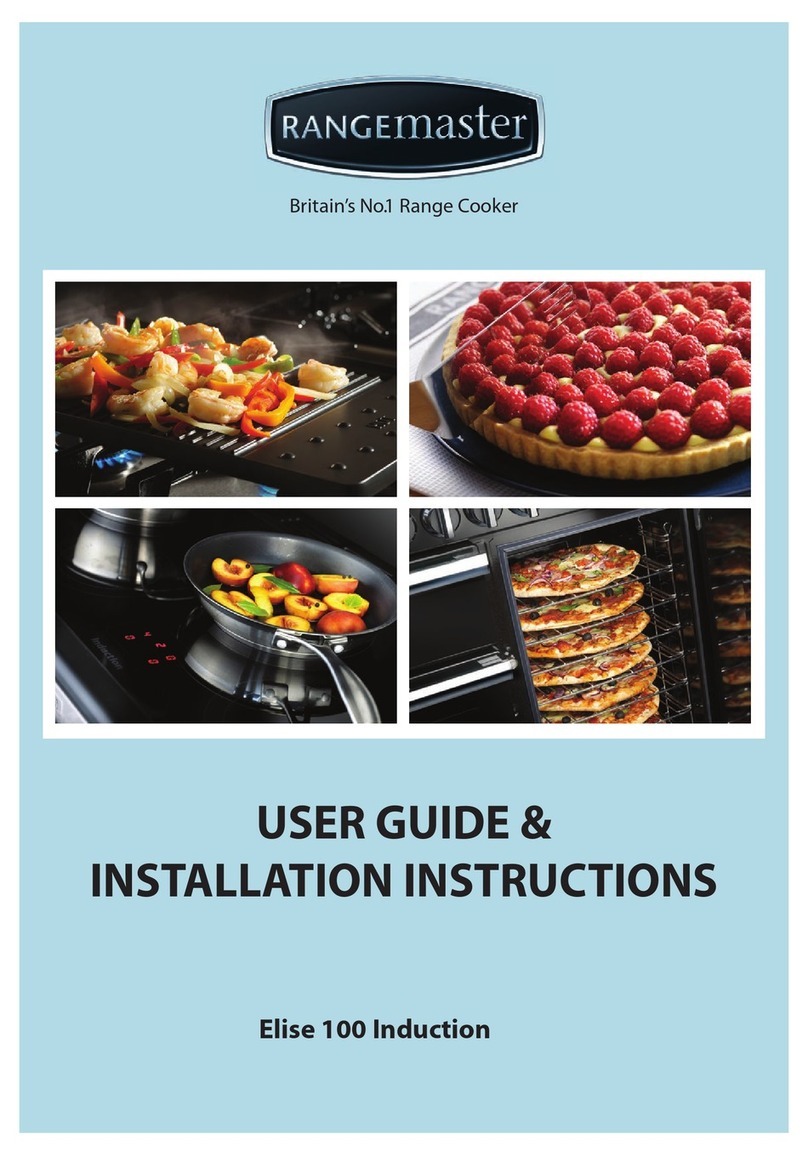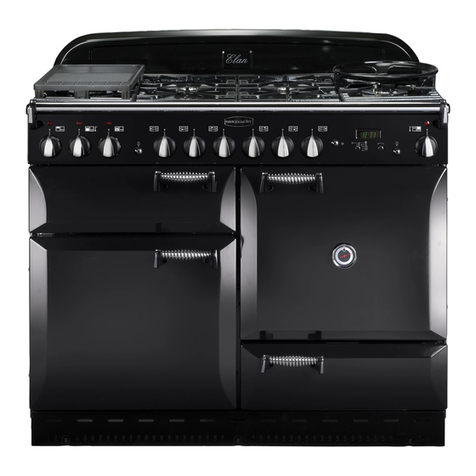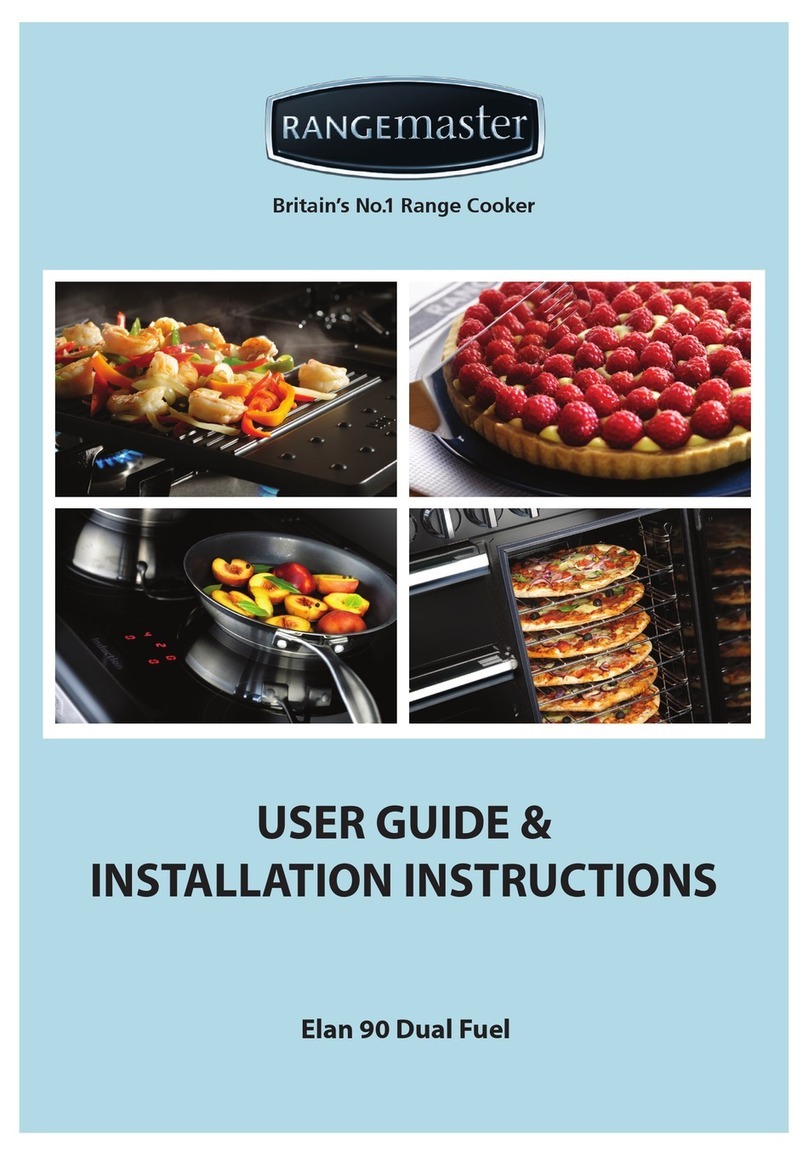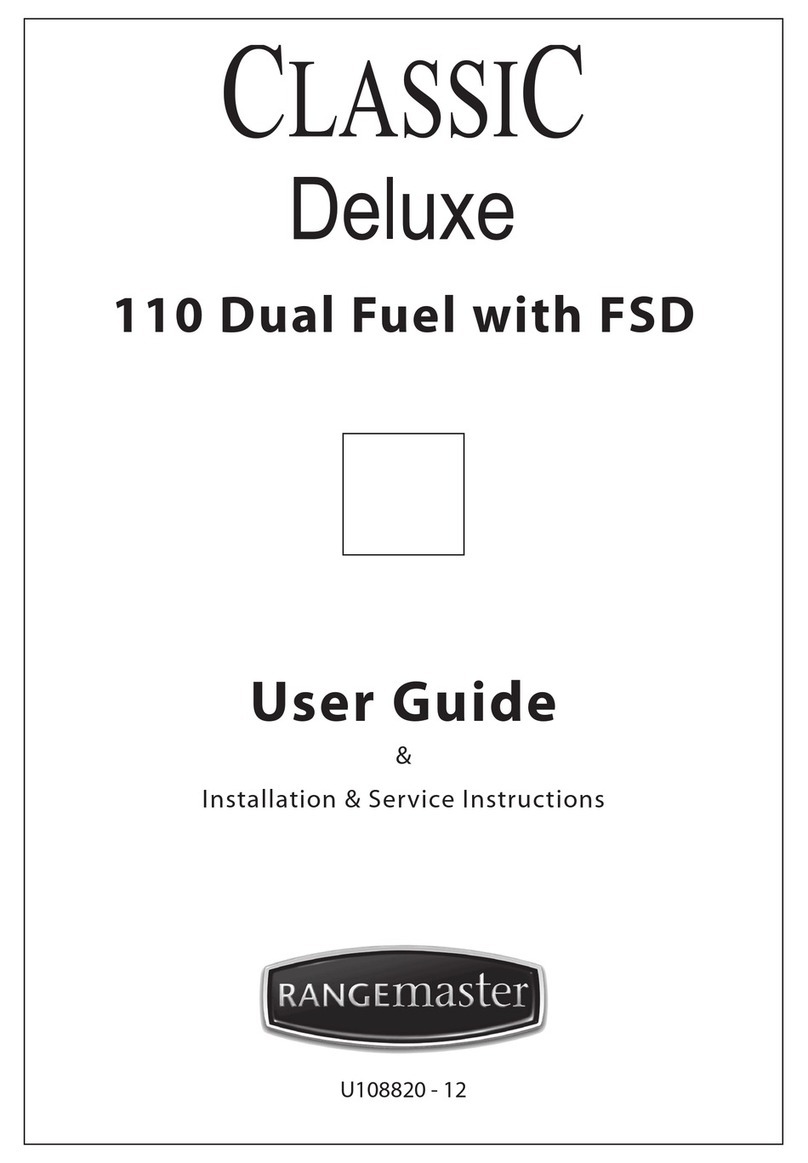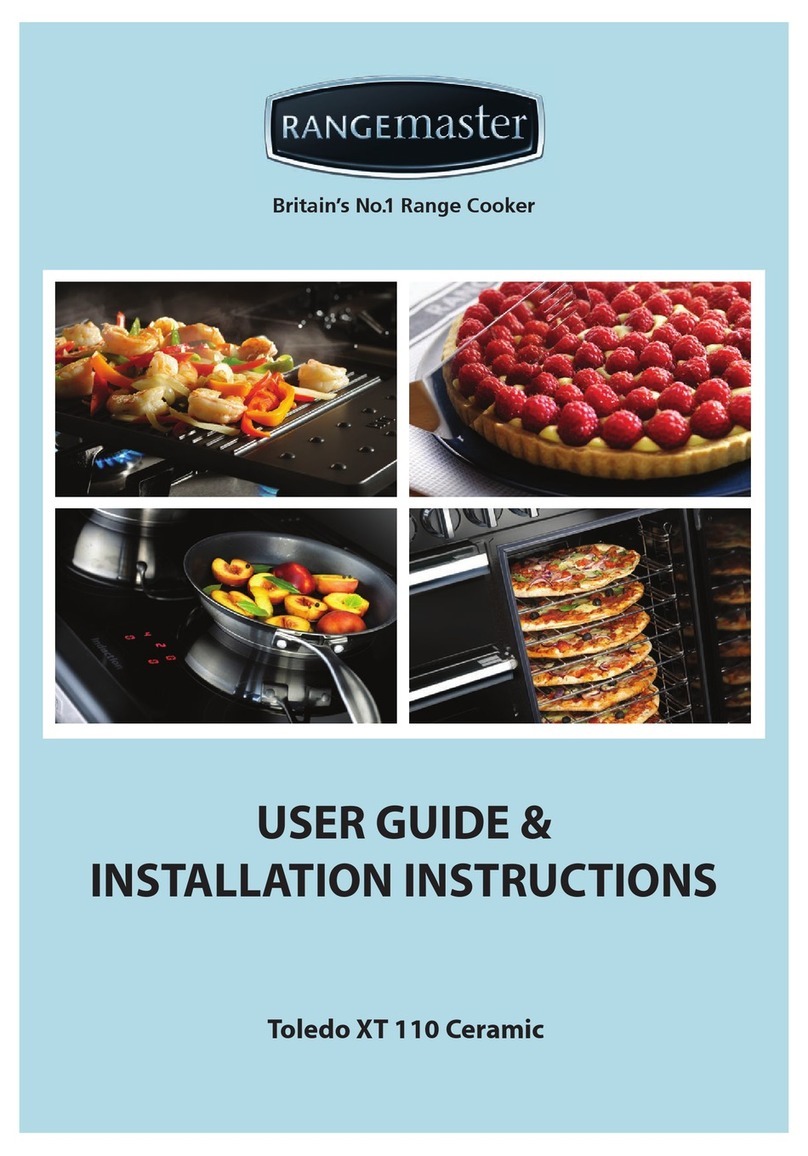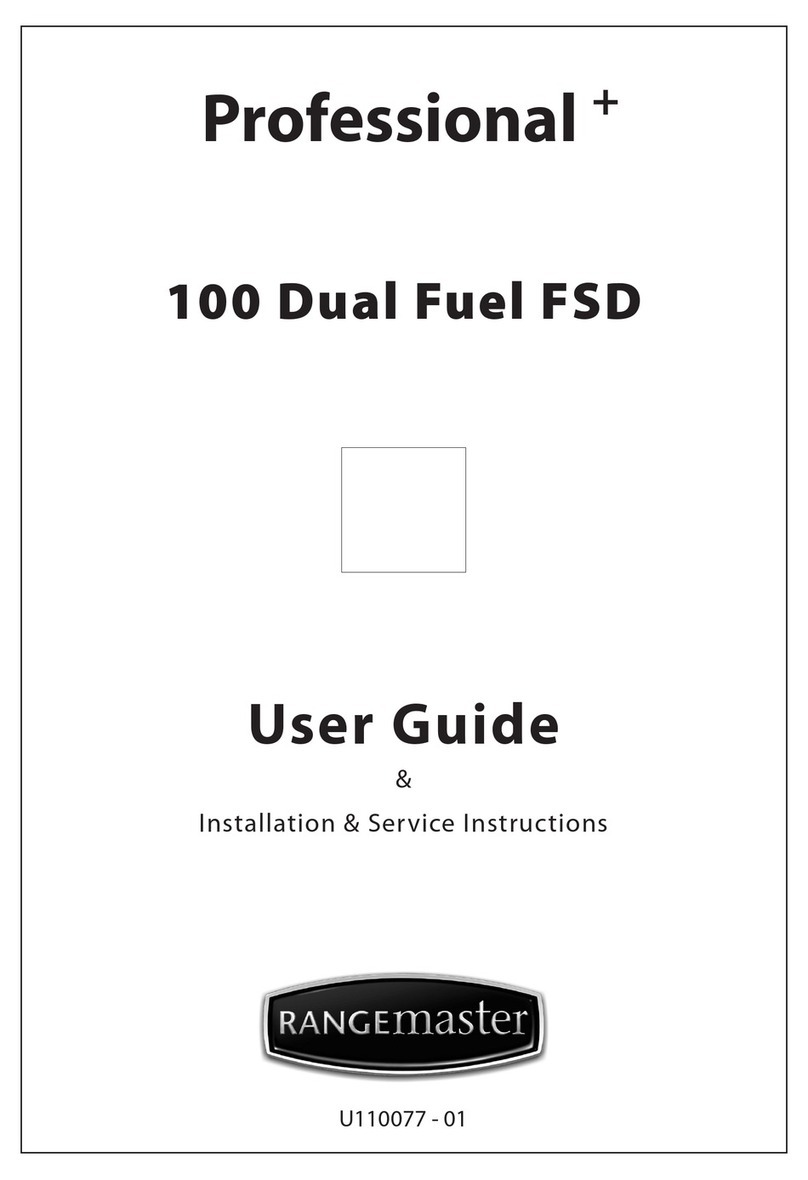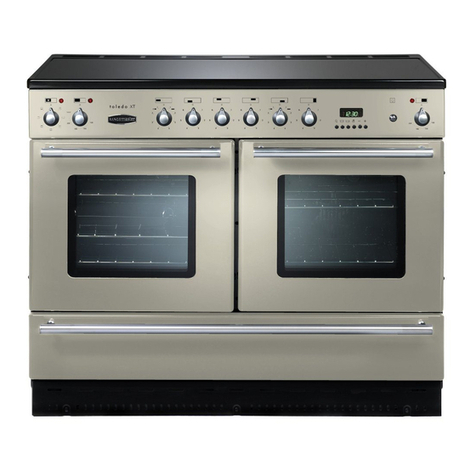1
1. Before You Start...
This User Guide covers a number of dierent models.
Although some of the illustrations will look dierent to
your particular model the functions will be the same. We
hope the meaning is clear.
Your cooker should give you many years of trouble-free
cooking if installed and operated correctly. It is important
that you read this section before you start, particularly if you
have not used an induction cooker before.
This appliance is designed for domestic cooking
only. Using it for any other purpose could invalidate
any warranty or liability claim. In particular, the
oven should NOT be used for heating the kitchen –
besides invalidating claims this wastes fuel and may
overheat the control knobs.
Installation and Maintenance
All installations must be in accordance with the relevant
instructions in this booklet, with the relevant national
and local regulations, and with the local electricity supply
companies’requirements.
Make sure that the cooker is correctly wired and switched on.
The hob control display will ash for about 2 seconds
during rst power setting – this is normal.
Set the clock to make sure that the ovens are functional –
see the relevant section in this manual.
Only a qualied service engineer should service the cooker,
and only approved spare parts should be used.
Always allow the cooker to cool and then switch it o at the
mains before cleaning or carrying out any maintenance work,
unless specied otherwise in this guide.
Peculiar Smells
When you rst use your cooker it may give o an odour. This
should stop after use.
Before using your cooker for the rst time, make sure that all
packing materials have been removed and then, to dispel
manufacturing odours, turn all the ovens to 200°C and run
for at least an hour.
Before using the grill for the rst time you should also turn on
the grill and run for 30 minutes with the grill pan in position,
pushed fully back, and the grill door open.
Make sure the room is well ventilated to the outside air
(see ‘Ventilation’ below). People with respiratory or allergy
problems should vacate the area for this brief period.
Ventilation
CAUTION: The use of a cooking appliance results in
the production of heat and moisture in the room in
which it is installed. Therefore, make sure that the
kitchen is well ventilated: keep natural ventilation
holes open or install a powered cookerhood that
vents outside. If you have several hotplates on, or
use the cooker for a long time, open a window or
turn on an extractor fan.
Personal Safety
Important information for pacemaker and implanted
insulin pump users: The functions of this hob comply with
the applicable European standards on electromagnetic
interference. If you are tted with a pacemaker or
implanted insulin pump and are concerned please consult
your doctor for medical advice.
DO NOT modify this appliance.
This appliance can be used by children aged from
8years and above and persons with reduced
physical, sensory or mental capabilities or lack of
experience and knowledge if they have been given
supervision or instruction concerning use of the
appliance in a safe way and understand the hazards
involved. Children shall not play with the appliance.
Cleaning and user maintenance shall not be made by
children without supervision.
WARNING: The appliance and its accessible parts
become hot during use and will retain heat even
after you have stopped cooking. Care should be
taken to avoid touching heating elements. Children
less than 8 years of age shall be kept away unless
continuously supervised.
When the hob is in use keep magnetic items, such as
credit and debit cards, oppy disk, calculators, etc.
away.
CAUTION: A long term cooking process has to be
supervised from time to time. A short term cooking
process has to be supervised continuously.
Danger of re: DO NOT store items on the cooking
surfaces.
To avoid overheating, DO NOT install the cooker
behind a decorative door.
Accessible parts will become hot during use and will
retain heat even after you have stopped cooking.
Keep babies and children away from the cooker and
never wear loose-tting or hanging clothes when
using the appliance.
DO NOT use a steam cleaner on your cooker.
